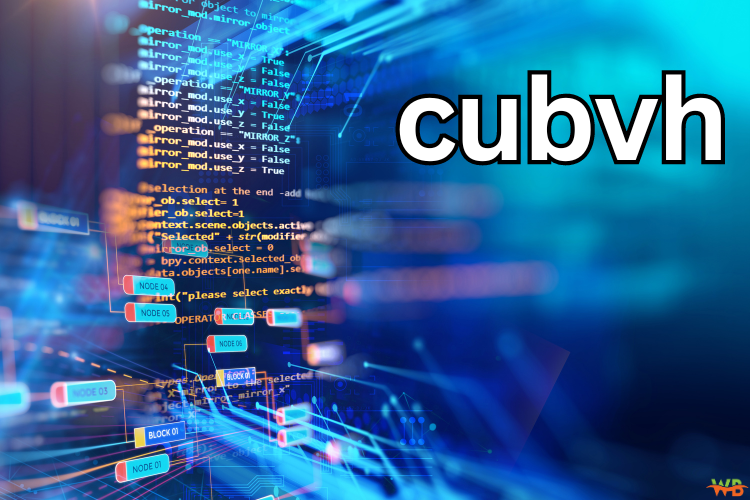In the rapidly evolving field of computer graphics and simulation, the demand for high-performance ray tracing applications on GPUs is steadily increasing. This demand has led to the development of cubvh, a revolutionary CUDA Mesh Bounding Volume Hierarchy (BVH) acceleration toolkit. This article explores the essence, functionality, benefits, and applications of cubvh, providing a comprehensive guide to leveraging its power for GPU-based ray tracing.
Understanding cubvh
What is cubvh?
At its core, cubvh is designed to leverage the power of GPUs to accelerate ray tracing computations. What precisely constitutes a CUDA Mesh BVH? To understand, it’s crucial to grasp the concept of Bounding Volume Hierarchy (BVH) and its vital role in ray tracing.
What is Bounding Volume Hierarchy?
A Bounding Volume Hierarchy is a hierarchical data structure used to organize geometric primitives, such as triangles in mesh models, into a tree-like structure of bounding volumes. These volumes serve as spatial partitions, enabling efficient ray intersection tests by eliminating unnecessary geometry traversal. Essentially, BVH acts as a roadmap for navigating complex scenes, guiding rays to their intersections with minimal computational effort.
The Functionality of cubvh
cubvh provides a suite of functionalities designed to streamline the process of BVH construction and traversal specifically for mesh acceleration on GPUs.
Building BVHs from Triangle Meshes
One of its key functionalities is constructing BVHs from triangle meshes with exceptional efficiency. By leveraging CUDA cores, developers can convert complex mesh models into optimized BVH representations effortlessly.
Traversing BVHs for Ray Intersection Queries
At the heart of any ray tracing application is the ability to quickly determine the intersection points between rays and scene geometry. Here, efficient algorithms are employed for traversing BVHs and performing ray intersection queries at high speed.
Additional Functionalities Offered by cubvh
Beyond its core functionalities, cubvh offers many supplementary features to enhance the user experience. These include dynamic BVH updates and efficient memory management strategies, providing a comprehensive toolkit for GPU-accelerated ray tracing.
Embracing the Benefits of cubvh
Enhanced performance for GPU-based ray tracing applications
By utilizing the parallel processing capabilities of GPUs, significantly enhances ray tracing application performance. With optimized BVH construction and traversal algorithms, developers can achieve unprecedented levels of rendering speed and efficiency.
Potentially Reduced Memory Usage
Also addresses memory constraints inherent in GPU-based ray tracing. By adopting memory-efficient data structures and traversal techniques, it aims to minimize memory overhead, allowing developers to handle larger and more complex scenes with ease.
Streamlined Development Process
With its user-friendly interface and comprehensive documentation, cubvh simplifies the development process for both novice and experienced developers. The toolkit’s robust features facilitate rapid prototyping and iteration, accelerating the time-to-market for ray tracing applications.
Getting Started with cubvh
Prerequisites
Before diving into the realm of GPU-accelerated ray tracing, ensure all prerequisites are in place. This includes installing the CUDA Toolkit and verifying hardware compatibility with its compute requirements.
Installation Guide
To start with cubvh, follow these steps:
- Install CUDA Toolkit: Download and install the CUDA toolkit compatible with your system.
- Verify GPU Compatibility: Ensure your GPU supports CUDA.
- Download cubvh: Obtain the latest version of cubvh from its official repository.
- Install cubvh: Follow the installation instructions provided in the repository’s README file.
Building from Source
For those interested in exploring cubvh’s inner workings, compiling the toolkit from source code offers invaluable insights. Follow these steps:
- Clone the Repository:
git clone https://github.com/cubvh/cubvh.git - Navigate to the Directory:
cd cubvh - Install Dependencies:
sudo apt-get install -y build-essential cmake - Build the Project:
cmake . && make
Using cubvh in Your Project
Basic Usage Example
To integrate cubvh into ray tracing projects, here’s a basic example:
cpp
Copy Code
int main() {
// Initialize cubvh and load triangle mesh data
cubvh::MeshData meshData = LoadMeshData(“scene.obj”);
// Build BVH from loaded mesh data
cubvh::BVH bvh = cubvh::BuildBVH(meshData);
// Perform ray intersection queries
Ray ray = GenerateRay();
IntersectionResult result = bvh.Intersect(ray);
// Process intersection result
ProcessIntersectionResult(result);
return 0;
}
This example showcases the integration of cubvh into a ray tracing pipeline, from BVH construction to ray intersection queries.
Advanced Usage Examples
For experienced developers looking to push the boundaries of GPU-accelerated ray tracing, advanced usage examples can provide inspiration. Implementing complex rendering techniques or leveraging advanced features can demonstrate the limitless possibilities of GPU-based rendering.
Resources for cubvh
GitHub Repository
The official GitHub repository is a treasure trove of resources. It includes source code, installation instructions, and issue tracking.
Documentation and Tutorials
Besides the GitHub repository, additional documentation and tutorials can enhance the experience. These resources offer comprehensive guides and practical examples, empowering developers to harness the full potential in their ray tracing endeavors.
Conclusion
cubvh is a testament to the relentless pursuit of innovation in GPU-accelerated ray tracing. Its efficient BVH construction algorithms and lightning-fast ray intersection queries redefine real-time rendering on GPUs. Looking to the future, it promises endless possibilities for advancing GPU-accelerated ray tracing.
By leveraging it, developers can achieve improved performance, reduced memory usage, and streamlined development processes. Don’t miss the chance to revolutionize your ray tracing applications with it. Get started today and unlock the full potential of GPU-accelerated ray tracing.
FAQs
1. What is cubvh and how does it help with ray tracing?
- cubvh is a CUDA Mesh BVH acceleration toolkit that boosts GPU ray tracing performance by efficiently constructing and traversing BVHs.
2. How does cubvh manage large mesh models?
- It uses a hierarchical BVH structure to organize and efficiently process large and complex mesh models for faster ray tracing.
3. What do I need to use cubvh?
You need:
- The CUDA Toolkit.
- A CUDA-compatible GPU.
- A development setup with CMake and a compiler.
4. How do I integrate cubvh into my project?
- Install the toolkit from the GitHub repository.
- Incorporate the essential headers and establish the library linkage.
- Utilize the functions for BVH construction and ray intersection.
5. Where can I locate additional details and assistance?
Check out the:
- GitHub repository
- Documentation
- Tutorials
- Community forums for GPU ray tracing.

Ton Roobprom is an experienced writer focused on practical advice across technology, business, travel, beauty, lifestyle, and home improvements. He specializes in distilling complex subjects into clear, actionable insights to help you enhance your daily life.


